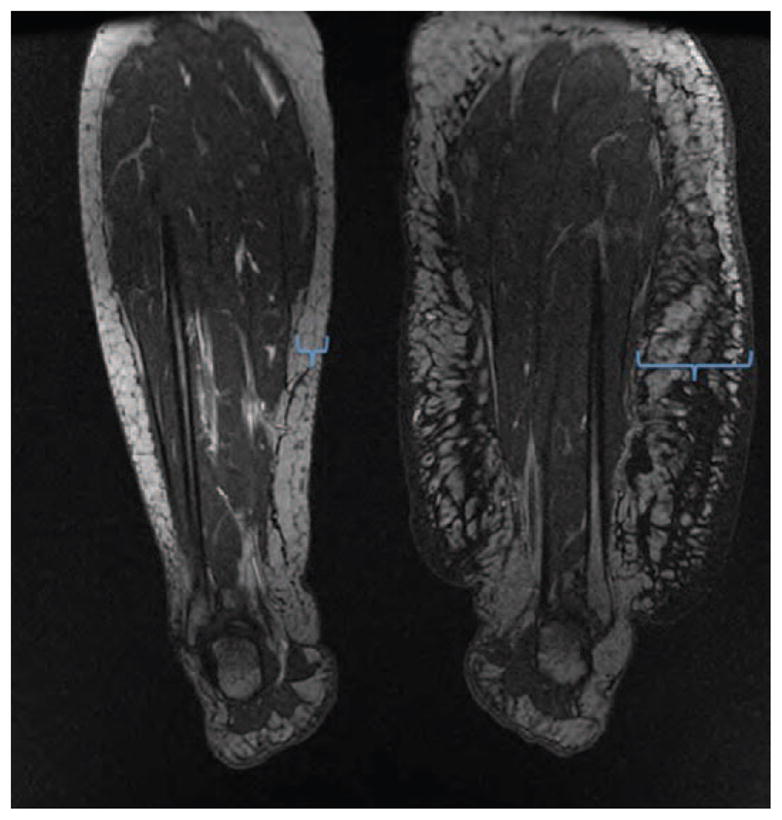Fig. 1.

End-stage lymphedema is associated with subcutaneous adipose deposition and “regional” obesity. (Left) Bilateral magnetic resonance imaging scan of a patient with severe left leg lymphedema after groin lymph node dissection for melanoma 15 years previously. Note significant adipose deposition in the subcutaneous compartment of the affected leg (blue brackets) compared with the normal limb. (Right) Photograph of a young patient with grade II lymphedema of the left leg 2 years after treatment for cervical cancer. Note adipose deposition in the entire left leg.
